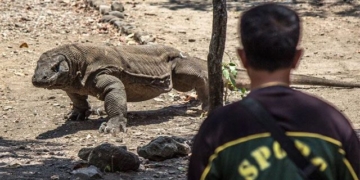Starting from 5300 BC, a Linearbandkeramik or Linear Pottery (LBK) culture developed in the Herxheim area of southwestern Germany, an area that can be described as a modest Stone Age settlement. The similar houses and rudimentary fields suggest that this small village was relatively safe from invaders and predators. However, around 4950 BC, this community suddenly vanished.
The town was abandoned, leaving behind shattered pottery, hundreds of butchered corpses, and a massive pile of bones. Today, researchers are uncertain about what happened, but signs suggest an increase in sacrificial rituals, possibly including cannibalism, were involved.
After excavating more than 500 remains suspected to be victims of cannibalism at Herxheim (Germany), scientists have made startling discoveries about cannibalism in prehistoric Europe.
According to scientists’ hypotheses, cannibalistic practices occurred on a large scale around 7,000 years ago. Cannibalism may have become a ritual where victims felt honored to be consumed.
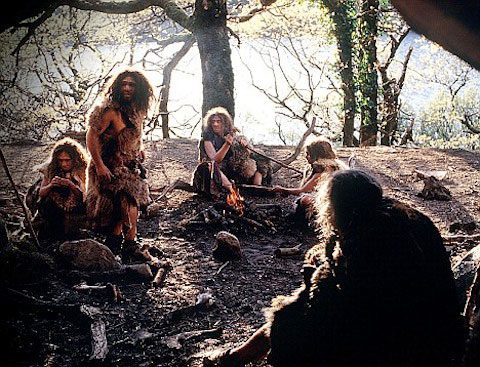
Prehistoric people 7,000 years ago were cannibals.
Researchers indicate that the ritual involved a group of nearly 10 victims, bound at the hands and feet, with their hair tied back to expose their necks. The victims included men, women, children, and pregnant women.
Typically, the victims would kneel in front of a wide pit. Warriors adorned with tattoos would stand behind them, using clubs or stone axes to send the victims to the afterlife. Immediately afterward, the women of the tribe would process the victims as if butchering animals.
Scientists reached these conclusions after excavating over 500 remains at Herxheim, Germany. All these remains showed signs of skinning, flesh removal, and bone breaking to extract marrow, similar to animal butchery. Skulls were often cut across the top, and ribs were broken, possibly to extract the heart…
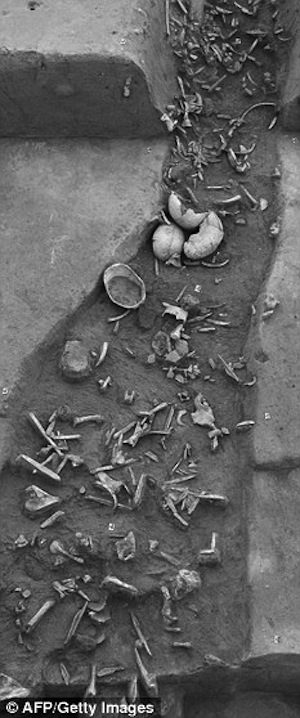
500 skeletons excavated at Herxheim, southern Germany, are evidence of large-scale cannibalism during the Stone Age.
Scientists hypothesize that these practices may have been driven by widespread famine during the Stone Age, as has occurred throughout history. During the siege of Leningrad in World War II, famine victims resorted to eating birds, dogs, and rats.
However, 7,000 years ago, Europe was in the optimal Holocene climate period, stable and perfect for sustaining human life, so famine could not have occurred. Therefore, scientists are considering another direction. It is possible that cannibalism became a religious ritual where sacrificing to one’s kind was seen as an honor.
Scientists based their findings on studies of tribal rituals documented in the works of Sir James Frazer in the late 19th and early 20th centuries. In these works, Frazer mentions many cases of tribes consuming the sacrificed enemies during battles, particularly those who were brave and strong.
The Basuto people in South Africa often consume the liver of their enemies to gain courage, eat ears for intelligence, and consume testicles for strength. The remaining parts are usually burned, with the ashes used in religious rituals.
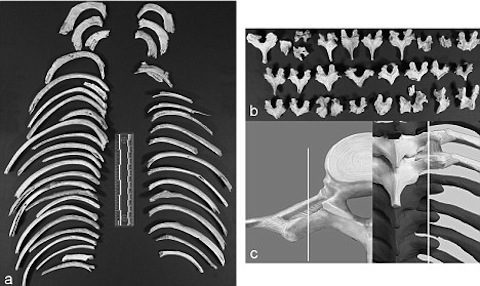
Examinations show that the remains at Herxheim were dissected similarly to animal butchery.
During the war between the British Empire and African tribes in the late 19th century, cannibalism also occurred. In 1824, British expeditionary army commander General Charles McCarthy was killed while fighting against the Ashanti tribe, and the tribal chief consumed his heart.
However, the Ashanti did not eat General McCarthy out of humiliation but to honor his admirable bravery. His bones were preserved in Ashanti temples with the utmost respect, similar to how bones were kept in medieval churches. McCarthy’s skull was covered in gold and used as a cup in the rituals of many subsequent kings.
Another example is the ball game ritual of the Maya, remnants of which still exist today in Honduras and Guatemala. Two teams would compete, and the winning team would proceed to the altar for sacrifice.
For ancient Maya warriors, dying in a sacrificial ritual was a great honor. Only the strongest and most resilient warriors were sacrificed and would enter the eternal happy realm according to Maya religion.
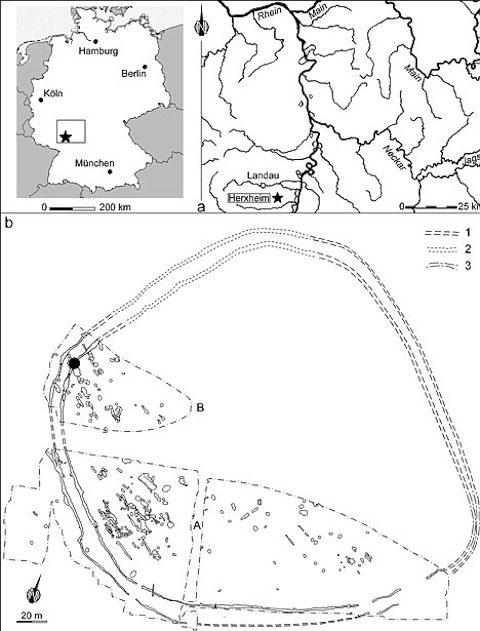
7,000 years ago, Herxheim was in a region with a stable climate, so famine could not occur.
In comparison with rituals worldwide, scientists hypothesize that the victims of cannibalism 7,000 years ago at Herxheim may have felt honored to be sacrificed. And the remains at Herxheim were likely honored greatly by their tribal members.



















































